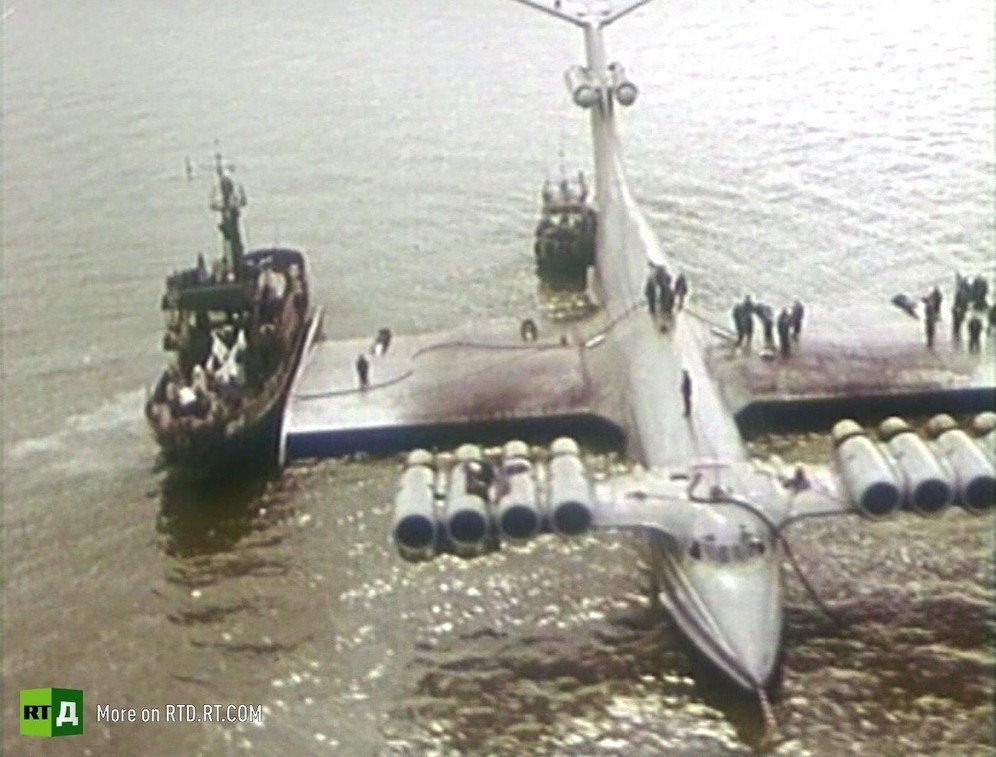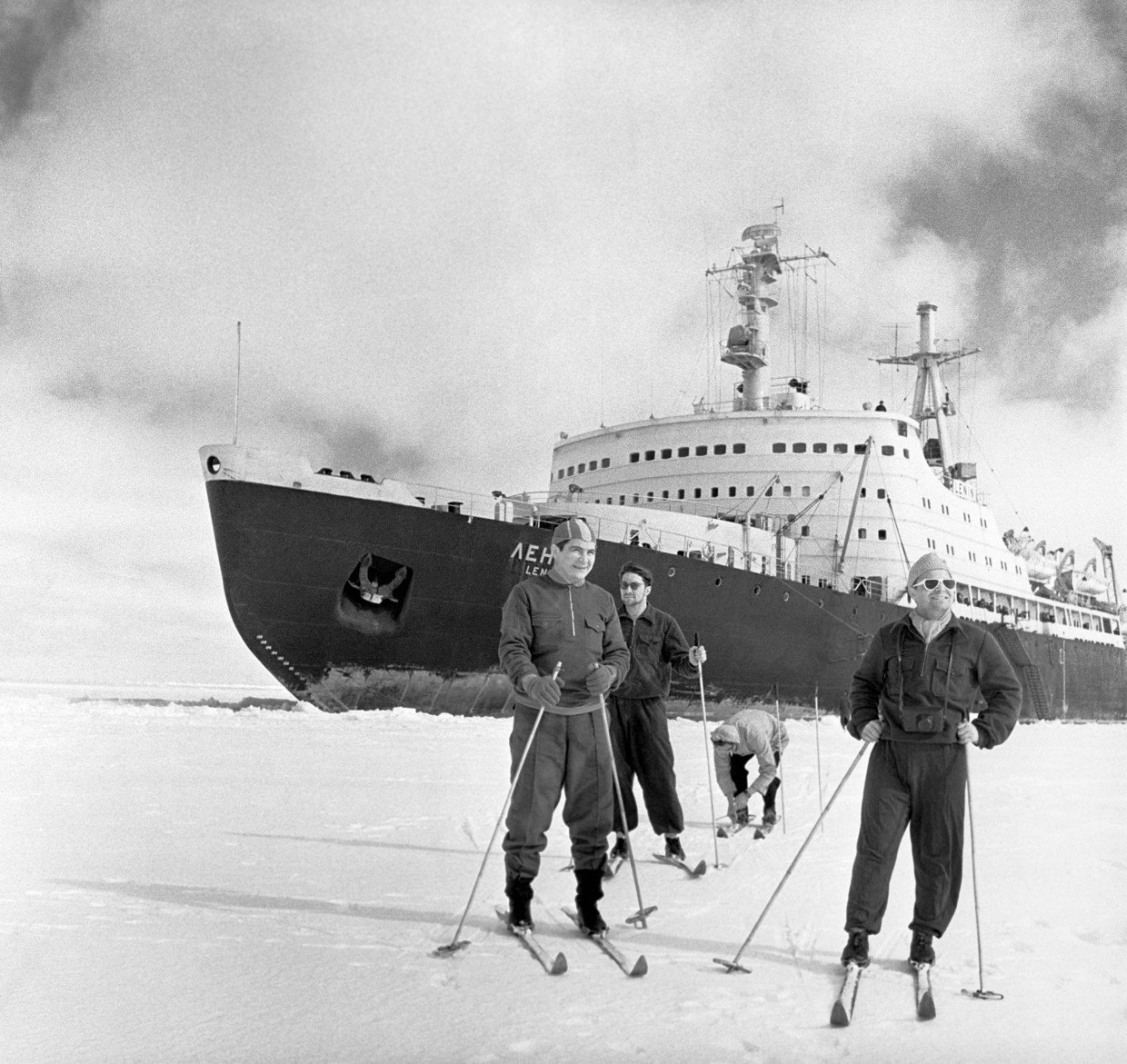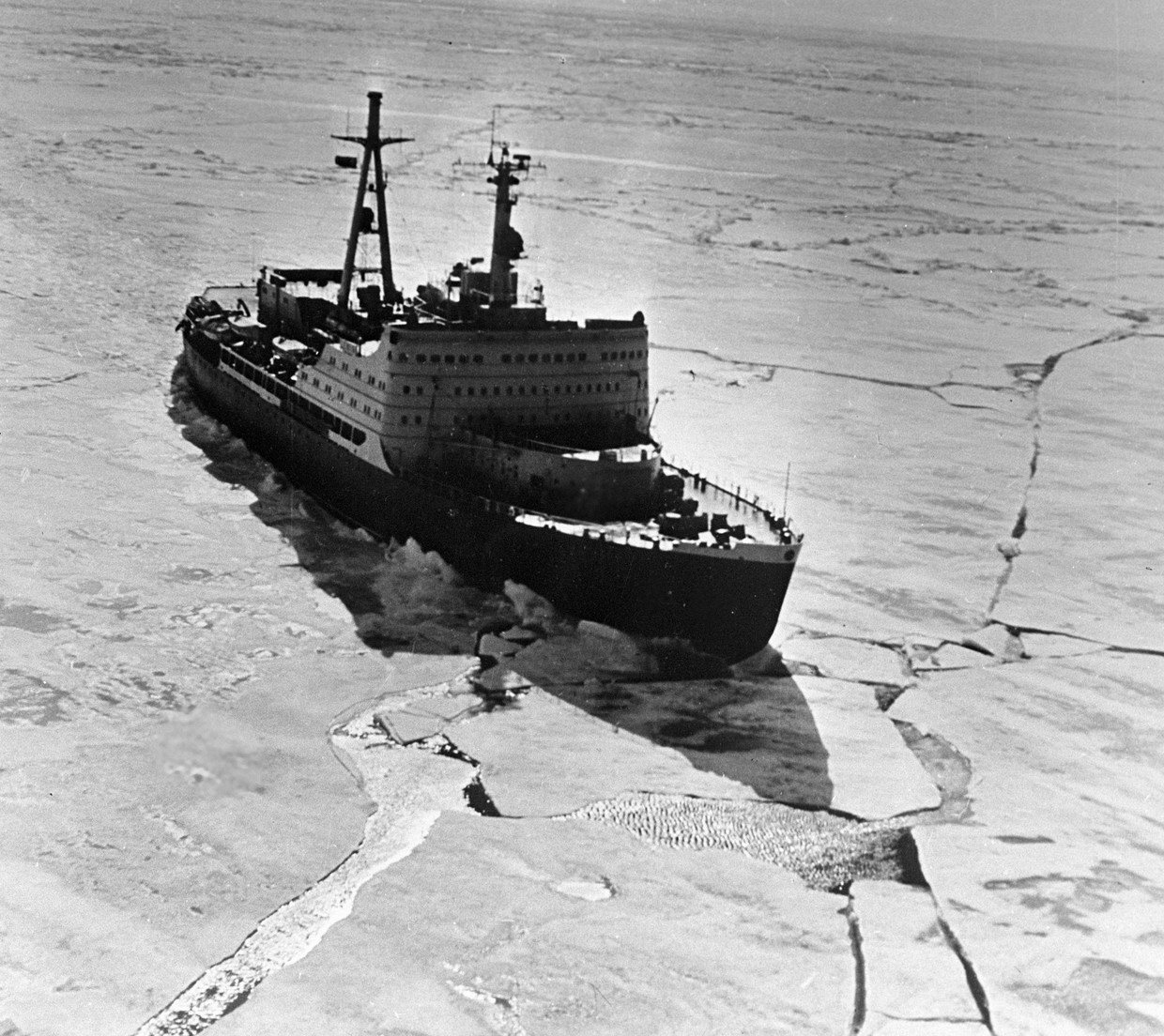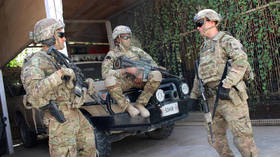From the Buran to the Caspian Sea Monster: 5 epic Soviet projects

The Tu-144 supersonic passenger jet entered service 43 years ago – to mark the date, RT has compiled a list of equally epic Soviet tech marvels. Some started legacies, others were forgotten, and some are still kicking today.
Tu-144, the 'Soviet Concorde'
One of only two commercial supersonic transport planes – the other being the Concorde – Tupolev Tu-144 first took flight on December 31, 1968, two months before its Anglo-French counterpart. With their sleek shapes and tilting pointy noses – necessary to switch between streamlined flight mode and visibility during take-off and landing – both became symbols in late 20th century aviation.

On December 26, 1975, the Tu-144 went into service, transporting mail between Moscow and the then Kazakh capital Alma-Ata (now Almaty). Two years later it carried its first passengers along the same route. The 3,200km flight took about two hours – twice as fast as a regular one.
Tu-144 creators had big plans for the craft. Maps were drawn up with supersonic air lanes connecting Moscow to all over the globe, including Europe, Japan and Cuba. But it was not meant to be: the only times the plane flew outside the Soviet Union was at three airshows in Le Bourget in the 1970s – and one of those times ended with a crash that killed 14 people.

Two more died in another crash landing in 1978. Plagued with safety issues and unprofitable, the Tu-144 ended its passenger-carrying career after just eight months and 55 flights. It occasionally carried cargo until 1999, when it was retired for good – four years before the Concorde.
Buran, the Soviet space shuttle
One of the ways the Tu-144s legacy endured was its use to train crews for the Soviet spacecraft Buran ('blizzard' in Russian). Conceived in 1973, the Buran was meant to rival the American space shuttle program, carrying crews and cargo to the orbit and back.

Development required a massive effort, involving some 2.5 million people from across the Soviet Union. The first flight was scheduled for 1984, but had to be pushed back, until in 1988 the Buran finally roared into the sky. It was carried on the 'Energia' rocket – the most powerful the Soviet Union ever built.
Buran's first and only flight was unique in that it was unmanned, controlled from the ground lift-off to landing. It flew around the Earth twice in four hours, and landed safely – forever. As the Soviet Union fell apart, economy forced the program to be suspended indefinitely in 1993.
Also on rt.com ‘Soviet space shuttle’: Learn how Buran made debut flight 30 years ago (PHOTOS, VIDEOS)An-225 Mriya, the heaviest plane ever built
Transporting the Buran on its back was the Antonov An-225 Mriya ("dream" in Ukrainian). Designed in the Ukrainian Soviet Republic with the initial purpose of carrying the Soviet spacecraft, it made its maiden flight in 1988 and entered full service in 1989.

With an impressive length of 84 meters (275 feet) and a wingspan of 88.4 meters (290 feet), it is one of the largest airplanes in existence.
Only one of these flying behemoths was ever built, and it took effort by companies from several cities across Russia and Ukraine (all part of the Soviet Union at the time). Capable of lifting 390 tonnes of cargo, it made it possible to move by air things previously though too heavy and bulky.

The one and only Mriya remains operational to this day, operated by Ukraine's Antonov Airlines and contracted to carry massive industrial and military equipment.
The Caspian Sea Monster
Before the Mriya, the heaviest lift capacity record was held by the KM (short for "Корабль-макет", or "prototype ship") – a unique Soviet ground effect vehicle built in the 1960s.

Granted, it didn't carry the cargo too high in the air – ground effect vehicles are designed to fly low, utilizing the increased lift force generated between the wings and the surface of the ground or water.
Dubbed the Caspian Sea Monster (which is also abbreviated to KM in Russian), the prototype could carry up to 304 tonnes of cargo and go at a speed of over 400 km/h (250 mph). It was developed and built in secrecy, and underwent 15 years of test flights on the Caspian Sea.

In 1980, the same year its creator died from injuries during the testing of another ground effect vehicle, the Caspian Sea Monster perished as well. Pilot error left it damaged and drifting in the water for several days, before it finally sank, never to be lifted back up.
The Lenin, the first nuclear icebreaker
In 1957, the Soviet Union added a revolutionary spark to the practice of clearing frozen-over sea lanes, by launching the first-ever nuclear-powered surface ship. Combining two things Russia has in abundance – ice and uranium, – was the Lenin, an icebreaker that began a unique shipbuilding trend.

Powered by two reactors and four turbines, the Lenin cleared ice along the Soviet Union's northern shores for over 30 years and sailed farther north than any surface vessel before it. It was retired in 1989, its hull worn thin by all the ice it had plowed through, and became a floating museum in the city of Murmansk.

The Soviet Union was, and Russia remains, the only country to build and use nuclear-powered icebreakers. A total of ten have been constructed since the Lenin, five remain operational to this day, and new ones are being built.
Subscribe to RT newsletter to get stories the mainstream media won’t tell you.













